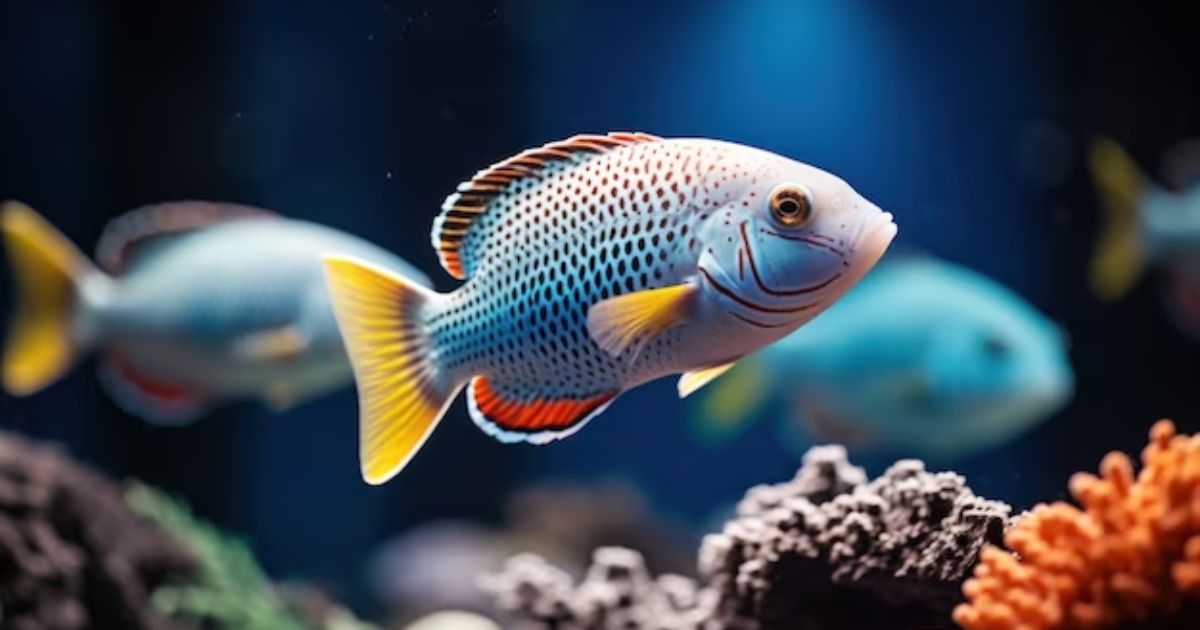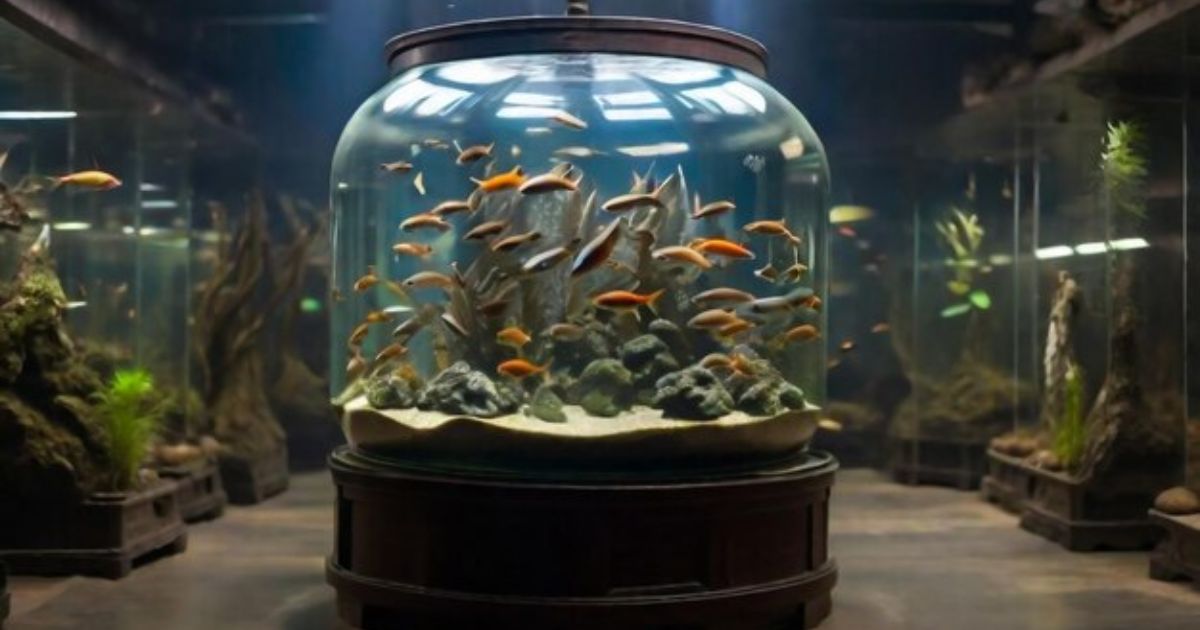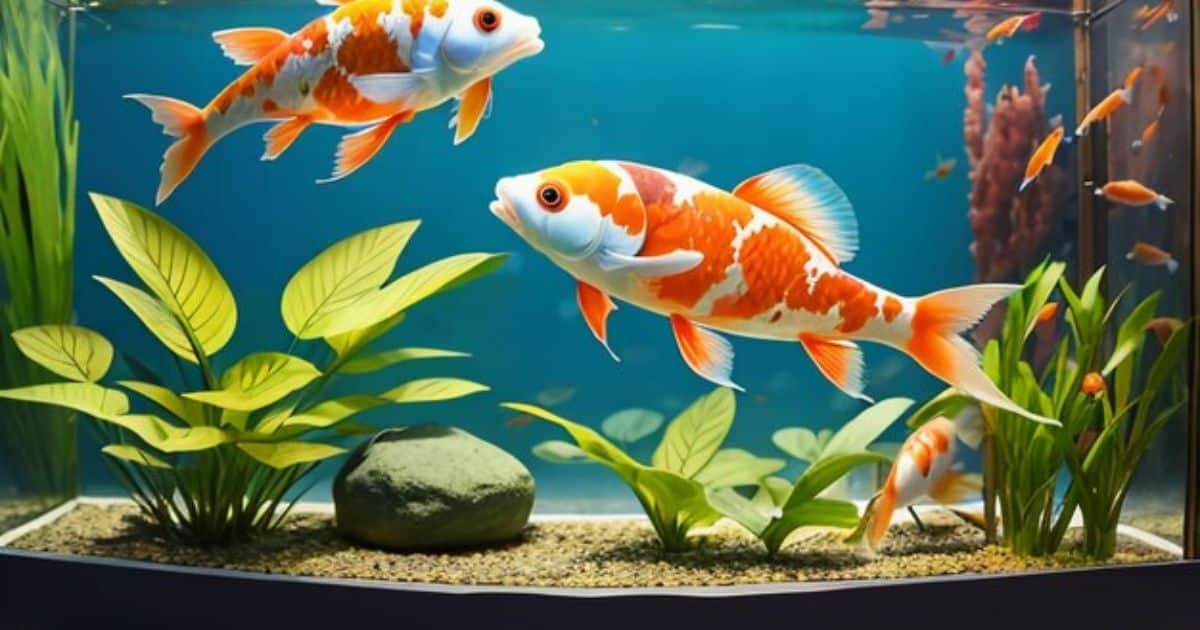Dive into the depths of fishkeeping with our comprehensive guide on stocking a 55-gallon tank. Like a captain navigating uncharted waters, it’s essential to find the perfect balance between a thriving aquatic ecosystem and the size of your tank. In this article, we debunk the common myth of the “one inch per gallon” rule and explore the key factors to consider when determining the number of fish suitable for your tank. Join us on this journey to create a harmonious underwater community.
Key Takeaways
- Tank size determines the space available for fish, so it is important to consider the adult size of the fish and their swimming needs.
- The rule of thumb is to have one inch of fish per gallon of water, but it is also essential to consider the compatibility of fish species in terms of behavior and water requirements.
- Filtration is crucial for maintaining water quality by removing toxins, waste materials, and excess nutrients, as well as promoting oxygenation and the growth of beneficial bacteria.
- Proper stocking involves researching fish species, avoiding overstocking, considering growth, and seeking advice from professionals for personalized guidance.
Main Considerations for Stocking a 55-gallon Tank

When stocking a 55-gallon tank, especially for enthusiasts looking to fly fish, it is essential to carefully consider the main factors that will influence the appropriate number and types of fish to maintain a healthy and balanced ecosystem. The size of the tank is an important consideration, as it determines the amount of space available for the fly fish to swim and interact.
It is recommended to follow the rule of thumb, which suggests stocking no more than one inch of fish per gallon of water. Another factor to consider is the compatibility of the fish species. Some species may be territorial or aggressive, while others may be more peaceful and social.
It is important to choose fish that can coexist harmoniously to avoid conflicts and stress. The water parameters such as temperature, pH level, and water hardness should be suitable for the chosen fish species. By taking these main considerations into account, one can create a thriving and balanced ecosystem in a 55-gallon tank.
Best Fish Species for a 55-gallon Tank
To create a thriving and balanced ecosystem in a 55-gallon tank, it is important to carefully select the best fish species that can coexist harmoniously and thrive in the given space. When choosing fish for your tank, it is crucial to consider their compatibility, size, and behavior.
Some popular fish species that are well-suited for a 55-gallon tank include angelfish, tetras, guppies, platies, and mollies. These species are known for their peaceful temperament and ability to adapt to various water conditions. They come in a variety of vibrant colors, which can add visual appeal to your tank.
It is important to research each species thoroughly to ensure they meet the specific requirements of your tank and to avoid overcrowding. By carefully selecting the best fish species, you can create a beautiful and thriving aquatic community in your 55-gallon tank.
Tips for Starting Your First 55-Gallon Fish Tank
In order to successfully initiate your first 55-gallon fish tank, it is essential to follow these expert tips. Creating a suitable environment for your fish requires careful planning and consideration. Here are some tips to get you started:
- Research fish species: Different fish have different requirements, including water temperature, pH levels, and tank size. Choose fish that are compatible with a 55-gallon tank and can coexist peacefully.
- Cycle the tank: Before adding any fish, it is crucial to establish a nitrogen cycle in the tank. This process ensures that beneficial bacteria develop to break down harmful ammonia and nitrites.
- Monitor water parameters: Regularly test the water parameters such as ammonia, nitrites, nitrates, and pH levels. Maintaining stable water conditions is crucial for the health and well-being of your fish.
| Tips for Starting Your First 55-Gallon Fish Tank | |
|---|---|
| Research fish species | Cycle the tank |
| Monitor water parameters | Maintain proper filtration |
| Regular water changes | Introduce fish gradually |
The Common Myth: One Inch per Gallon Rule
The validity of the widely held belief in the “One Inch per Gallon Rule” for fish tank stocking is often questioned by experts. This rule suggests that you can safely keep one inch of fish per gallon of water in your tank. This approach oversimplifies the complex requirements of fish and can lead to overcrowding and poor water quality.
have different activity levels, growth rates, and waste production, which means that their space requirements vary greatly. Factors like filtration, water quality, and tank maintenance also play a crucial role in determining the suitable number of fish for a tank. Therefore, it is essential to research the specific needs of the fish species you are interested in and consider their adult size, behavior, and compatibility with other fish before stocking your tank.
The Actual Volume of Your Aquarium

Determining the actual volume of your aquarium is crucial for accurately calculating the appropriate number of fish to keep. The commonly used measurement, such as “55-gallon tank,” does not necessarily reflect the true volume of water in your aquarium. It is important to take into account the displacement caused by gravel, rocks, decorations, and the space at the top of the tank.
To accurately determine the volume, you can use a measuring container to calculate how much water is needed to fill the tank. This will provide you with the true volume of your aquarium, enabling you to make informed decisions about the number of fish you can safely accommodate. By understanding the actual volume, you can create a harmonious and healthy environment for your fish, fostering a sense of belonging within your aquarium community.
Fish Behavior and Tank Dimension
When considering fish behavior and tank dimension, it is important to understand the relationship between the two. Fish behavior is influenced by the available space in the tank, as well as the tank’s layout and features. Different fish species have different requirements in terms of swimming space, hiding spots, and territory. Providing a suitable tank dimension is crucial for the well-being and happiness of your fish.
To help you better understand the relationship between fish behavior and tank dimension, here is a table showcasing some common fish species and their recommended minimum tank size:
| Fish Species | Minimum Tank Size (Gallons) | Behavior with Tank Size |
|---|---|---|
| Betta | 5 | Labyrinth fish, prefer small tanks with hiding spots |
| Guppy | 10 | Active swimmers benefit from spacious tanks with plants |
| Angelfish | 20 | Tall tanks with vertical space for their long fins |
One Inch per Gallon: Pros and Cons
One popular method for determining the number of fish suitable for a 55-gallon tank is the ‘One Inch per Gallon’ rule. This rule suggests that you can have one inch of fish per gallon of water in your tank. While this method may seem simple and convenient, it has both pros and cons:
- Pros:
- Easy to calculate: The rule provides a straightforward calculation that allows beginners to estimate the number of fish they can keep.
- Provides a general guideline: It gives a rough idea of the maximum number of fish that can be accommodated in the tank.
- Helps prevent overstocking: Limiting the number of fish based on tank size, it helps maintain good water quality and reduces stress on the fish.
- Allows for flexibility: The rule can be adjusted based on the specific needs and behavior of the fish species.
- Cons:
- Ignores fish size variation: The rule does not consider the size and growth rate of individual fish, which can lead to overcrowding if larger species are chosen.
- Neglects biological filtration: The rule does not consider the capacity of the tank’s filtration system, which is crucial for maintaining a healthy aquatic environment.
- Does not account for fish activity levels: Some fish are more active and require more swimming space, so the rule may not be suitable for all species.
- Does not consider territorial behavior: Certain fish are territorial and require additional space to establish their territories, which is not accounted for in the rule.
- Ignores waste production: Fish waste production can vary, and the rule does not consider the impact of waste accumulation on water quality.
While the ‘One Inch per Gallon’ rule can be a useful starting point, it is important to consider other factors such as fish size, behavior, and waste production to ensure a healthy and comfortable environment for your fish. Consulting with a knowledgeable aquarium professional can provide valuable insights tailored to your specific tank and fish species.
The Importance of Filtration in Stocking Your Tank
To ensure a healthy and balanced ecosystem in your 55-gallon tank, it is crucial to understand the importance of proper filtration when stocking your tank. Filtration plays a vital role in maintaining water quality by removing toxins and waste materials produced by fish and other inhabitants of the tank. Without adequate filtration, these pollutants can accumulate and lead to a decline in water quality, which can be harmful to the health and well-being of your fish.
A good filtration system helps to remove excess nutrients, control ammonia and nitrate levels, and ensure oxygenation of the water. It also provides a stable environment for beneficial bacteria to thrive, which helps in breaking down harmful substances. Proper filtration is essential for creating a clean and healthy environment for your fish to thrive and flourish.
The 35 Best Fish for a 55-Gallon Tank

Proper filtration is essential for maintaining the health and well-being of fish in a 55-gallon tank, and it also sets the foundation for selecting the 35 best fish for this size aquarium. When choosing fish for a 55-gallon tank, it is important to consider their compatibility, size, and behavior. Here are five popular options to consider:
- Angelfish: Known for their elegant appearance and peaceful nature, angelfish are a great addition to a 55-gallon tank.
- Gouramis: These colorful and hardy fish come in various species, such as dwarf gouramis and pearl gouramis, and they are known for their peaceful temperament.
- Rainbowfish: With their vibrant colors and active behavior, rainbowfish bring life and beauty to any aquarium.
- Corydoras Catfish: These bottom-dwelling fish are not only adorable but also great tank cleaners, as they help to keep the substrate clean.
- Harlequin Rasboras: These small, schooling fish are peaceful and add a lively presence to the tank.
FAQ’s
How Often Should I Change the Water in My 55-gallon Tank?
The frequency of water changes in a 55-gallon tank depends on various factors such as the number and size of fish, filtration system, and water quality. It is important to perform regular water tests and observe the condition of the tank to determine the appropriate schedule for water changes.
What Are Some Common Beginner Mistakes When Setting up a 55-gallon Fish Tank?
When setting up a 55-gallon fish tank, common beginner mistakes include overcrowding the tank, not properly cycling the tank, neglecting to test water parameters regularly, and not providing adequate filtration and maintenance.
Can I Mix Different Species of Fish in a 55-gallon Tank?
Mixing different species of fish in a 55-gallon tank can be possible, provided that the fish have compatible temperaments, dietary needs, and water parameter requirements. It is important to research each species before making any decisions.
How Many Plants Should I Have in My 55-gallon Tank?
When considering the number of plants for a 55-gallon tank, it is important to create a balanced ecosystem. A general guideline is to have 1-2 plants per gallon, but the specific needs of the fish and the desired aesthetic should also be taken into account.
How Long Does It Take for a 55-Gallon Tank to Cycle Before Adding Fish?
The length of time required for a 55-gallon tank to cycle before introducing fish is an important consideration. Proper cycling ensures a stable and healthy environment for the fish, typically taking 4-6 weeks.
Conclusion
In conclusion, when stocking a 55-gallon fish tank, it is important to consider the actual volume of the tank, the behavior of the fish, and the importance of proper filtration. The commonly mentioned “one inch per gallon” rule is a myth that should not be relied upon. Instead, research and choose fish species that are suitable for the tank size and compatible with each other. An interesting statistic is that 35 fish species are recommended for a 55-gallon tank.

